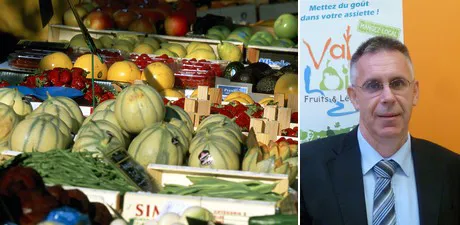In an interview with Freshplaza, Hugues Decrombecque, director of IDfel (Development Initiative for the fruits and vegetables of the Loire Valley), explains that the concept is increasingly present in the mind of the consumers. “We observe a growing attention to local products by the consumers, and thus by the distributors who wish to meet the demand. It is true that many other concepts are currently also high on the consumers’ interest list, such as biological, zero-pesticide residue, quality labels... However, the “local” label seems to speak the most to the consumers.” But what is this notion which generates so much interest?

What is a “local” product?
According to Hugues, the notion of “local” can carry many different meanings depending on the consumer. “There are many different ideologies. Some consider a product to be local because they think that they got it directly from the producer. But we suppose that this concerns only a small part of the population. A good proportion of these direct sales escape the statistics, but the volumes of merchandise sold this way are nevertheless very small. Besides, it can sometimes be difficult for a consumer to differentiate on the market between a producer and a reseller. The standardized absence of communication about local products allows retailers to promote their merchandise a little as they please. Many resellers offer fruits and vegetables which are not theirs, and which are not produced locally either.
Other consumers will determine the “local” character of a product based on the number of miles it has travelled or its carbon footprint. By favoring short circuits, they aspire to prioritize the environmental aspect. Unfortunately however, many studies show that in terms of carbon footprint, shorter circuits are no panacea...despite what most consumers think. Others associate “local” with small producers, thus excluding the bigger structures which are also part of the same territory. Therefore, perceptions revolving around the concept of ‘local’ products vary greatly, and there lies the complexity of such a notion,” explains Hugues. Not to forget that in terms of geography, the definition of “local” also varies from one consumer to the next.
Moreover, the concept gives rise to another question. “We have members today in many departments of France. So one could say that they each are ‘local’ producers everywhere. But in reality, they do not have a packaging plant in all departments. Additionally, the logic of cost optimization and rationalization makes it such that an apple from Indre et Loire, for instance, might have to be stored in Angers, and packaged there in order to then be distributed to retailers back in Indre et Loire. So consumers relying on the label will be satisfied with their purchase which they will consider to be ‘local’, although the products will have travelled quite a distance.” This additional aspect shows again the complexity behind such a popular notion. “The ‘local’ label today reflects the image of the brand, the marketing aspect or at least how it is perceived by the consumer. However, there are more and more initiatives such as ‘C du Centre’ which aim at giving products a regional identity, without establishing a clear guarantee. This would indeed require setting up controls, defining when exactly a product can be considered local and, for processed products, what minimum proportion of ‘local’ ingredients a product must contain in order to be assigned the ‘local’ label…”
Finally, Hugues reminds us that the notion is not necessarily a guarantee of quality, contrary to the general consumer perception. “We must keep in mind that the environment and the context in which we consume a product have a great influence on how we perceive its quality. Like the wine bottle bought from the cellar of the little winegrower while on vacation with friends, it feels very special at the time, but not so much once tasted back in our home. This is another problem with which our industry is confronted: how to reproduce this fantasy of flavor, this Proust madeleine, in the head of the consumer.”
Also worthy of mention is the discrepancy in supply between the regions. Besides the differences in quality, the diversity of the cultivated products could also play a role in what is perceived as “local”.
The fruits and vegetables of the Loire Valley: a great diversity
“The Loire Valley is historically associated with the Loire castles, erected at the time of the kings of France. The Loire Valley is therefore considered the ‘garden of the kings’, who liked to eat a variety of foods. They chose the right region, if you ask me, because the main wealth of the Loire Valley is its climate and soils, which allow for a diverse range of fruits and vegetables. In other parts of France, the choice in productions is more limited. In the Loire Valley, almost anything can grow, even if it is not necessarily the local specialty. There are of course apples, pears, blackcurrants (60% of the French blackcurrant is produced in the region), as well as tomatoes in the very sunny Nantes region, bell peppers, cucumbers, eggplants, leeks, lamb’s lettuce of Nantes, asparagus, Sologne strawberries, melons, beetroots (around Orleans), radishes, shallots, onions, early potatoes and many other tasty products.”
For more information:
Hugues Decrombecque
IDfel
1 Rue Charles Lacretelle, 49070 Beaucouzé, France
Phone: 02 41 37 53 75
hdecrombecque@valdeloire-fel.org
www.idfel.fr
